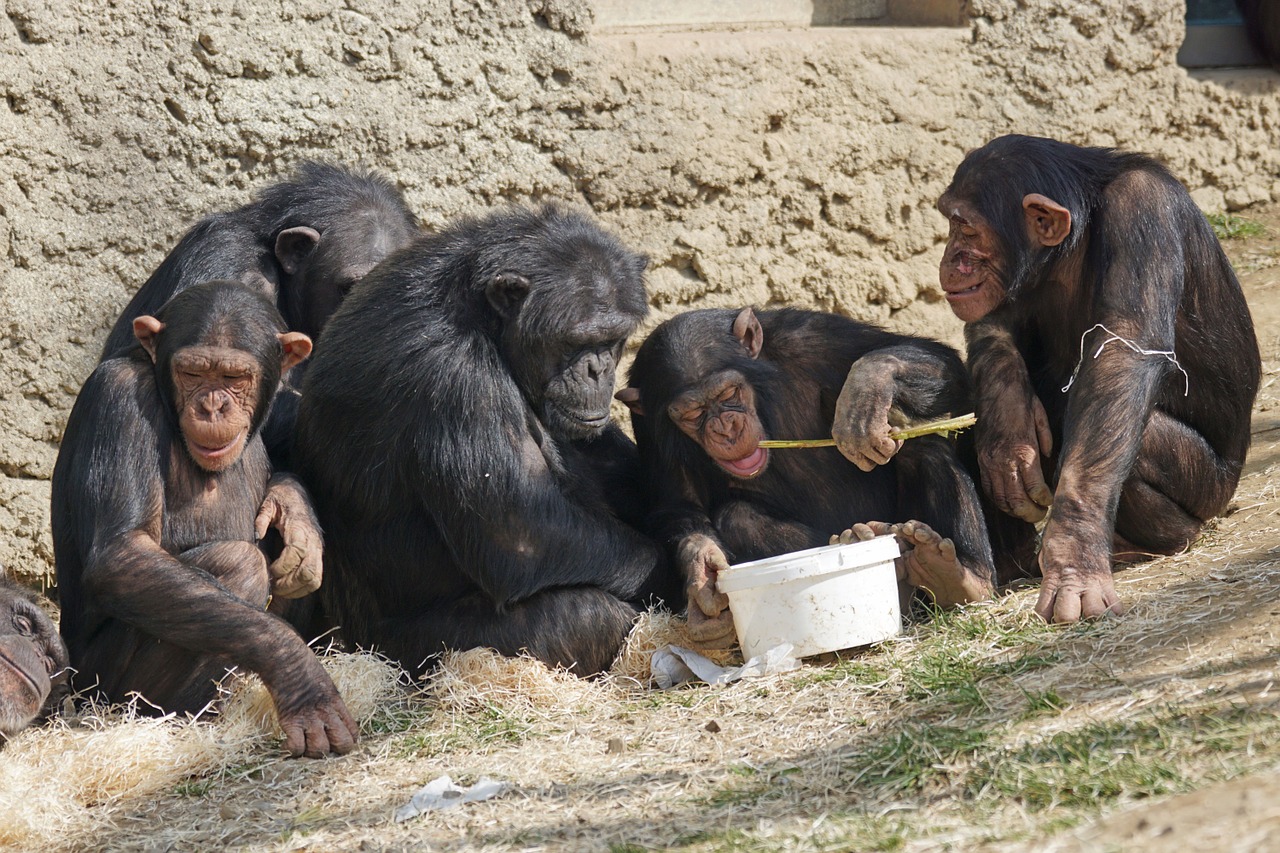

Chimpanzees and bonobos are our cousins, not our ancestors. Efforts to reconstruct traits of the last common ancestor of Pan and Homo (LCA PH) remain speculative, particularly given the sparse fossil record for African apes in the late Miocene (McNulty, 2010 Andrews, 2020).

An extreme version of this argument holds that humans are too distinct for any comparisons with Pan to be useful (Fuentes, 2018 Marks, 2002). Still others have argued that neither species of Pan is particularly similar to our common ancestor (Sayers & Lovejoy, 2008 White et al., 2012). Others have emphasized the challenges posed to this view by our other closest living relatives, bonobos ( Pan paniscus): female-dominated pacifists that defuse tension with sex (Parish & de Waal, 2000). Molecular evidence of the close genetic relationship between humans and chimpanzees (Sibley & Ahlquist, 1984) suggested that chimpanzees provide a window into the lives of our common ancestors: male-dominated, warlike, monkey hunters (Ghiglieri, 2000 Goodall, 1990 Wrangham & Peterson, 1996). Research at Gombe revealed that chimpanzees, like humans, make and use tools (Goodall, 1964), hunt in groups and share meat (Goodall, 1963), and have hostile intergroup relations, including fatal attacks (Goodall et al., 1979). Additionally, other studies that follow Gombe's model of collaborative long-term field research have broadened our understanding of living primates, providing invaluable comparative data for testing hypotheses about how and why humans evolved our many distinctive traits. The Gombe chimpanzee study has continued for 60 years, producing over 300 scientific publications and reaching a broad global audience through popular books, magazine articles and films. Leakey's hopes have been rewarded abundantly. What sort of societies did they have? What did they eat? How did they behave? Fossils provide indispensable evidence, but can offer only limited information about the living creatures that left those remains behind. Leakey believed the ape and human lineages had diverged deep in time (Leakey, 1970), but nonetheless thought studies of living apes would provide essential context for understanding human evolution.

Goodall's mentor, Louis Leakey, hoped that studying living apes would shed light on the behaviour of fossil apes such as Proconsul (Peterson, 2006). In 1960, Jane Goodall established the first long-term field study of chimpanzees ( Pan troglodytes) at what is now Gombe National Park, Tanzania, just over a century after On the origin of species (Darwin, 1859) laid the foundation for an evolutionary understanding of human origins. Here I consider some possible explanations for these transitions, with an emphasis on contributions from Gombe. Key steps along this path include: (a) changes in diet (b) increased use of tools (c) bipedal gait (d) multilevel societies (e) collective foraging, including a sexual division of labour and extensive food transfers and (f) language. Evidence from primate field studies suggests that the hominin path depends on our heritage as apes: inefficient quadrupeds with grasping hands, orthograde posture and digestive systems that require high-quality foods. In either case, field studies provide opportunities to test hypotheses for how and why our lineage has followed its peculiar path through the adaptive landscape.

However, findings emerging from studies of our other closest living relative, the bonobo ( Pan paniscus), indicate that either bonobos are derived in these respects, or the many similarities between chimpanzees and humans evolved convergently. The close phylogenetic relationship between chimpanzees and humans suggests that these traits were present in the last common ancestor of Pan and Homo (LCA PH). Sixty years of research on chimpanzees ( Pan troglodytes) at Gombe National Park, Tanzania have revealed many similarities with human behaviour, including hunting, tool use and coalitionary killing.


 0 kommentar(er)
0 kommentar(er)
